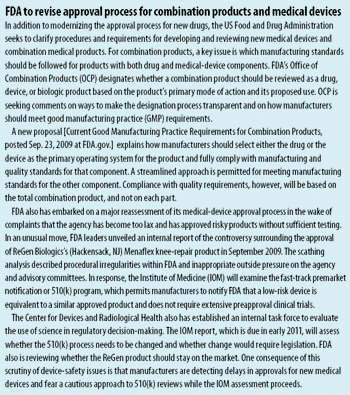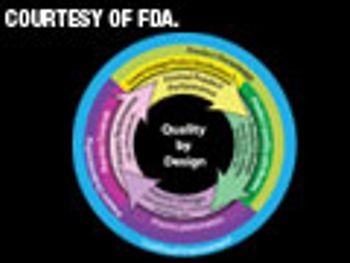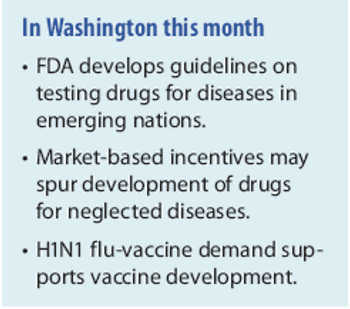
Blame it on cafeteria gossip, outdated procedures, and major miscommunication.

Blame it on cafeteria gossip, outdated procedures, and major miscommunication.

Generic-drug manufacturers look to expand into biologics and complex dosage forms. This article contains bonus online-exclusive material.

Also, FDA and WebMD increase collaboration and PPD is awarded contract to evaluate the agency's postmarket spontaneous-adverse-event surveillance system.

New tests solve one issue, but cheaper plastic and new stoppers cause problems.

The heightened focus on risk raises concerns about delays in approving new drugs.

New pricing controls and healthcare reforms may be pushing the pharmaceutical market out of this southeast Asian country. This article contains bonus online-exclusive material.

The US Food and Drug Administration issued a guidance for industry and review staff titled, Labeling for Human Prescription Drug and Biological Products-Determining Established Pharmacologic Class for Use in the Highlights of Prescribing Information.

The US Food and Drug Administration published its first draft guidance for industry about Risk Evaluation and Mitigation Strategies (REMS) on Sept. 30, 2009.

Pharmaceutical companies in India have had a hold on the biotechnology sector for many years, and they're not about to let the follow-on biologics market pass them by.

Strict enforcement, new rules, and organizational changes signal an activist tone.

Like life, the workplace also can have many surprises.

Representatives of one pilot program participant, Wyeth, outline the experiences and lessons learned for implementing a science- and risk-based approach to drug-development and manufacturing.

The FDA issued a proposed rule to clarify the cGMP requirements applicable to combination products in the Federal Register.

The author analyzes, from an agency perspective, whether question-based review has improved product quality or made the review process easier for regulators or for industry.

The US Food and Drug Administration last week issued the final draft of its guidance for industry titled Labeling of Nonprescription Human Drug Products Marketed Without an Approved Application as Required by the Dietary Supplement and Nonprescription Drug Consumer Protection Act: Questions and Answers.

Also, FDA issues several recent enforcement letters to Cambrex, Johnson & Johnson, and Pedinol.

Thanks to their keen observations, these auditors reveal the true culprits of deviations.

Health crises generate support for new vaccines and treatments for diseases found in developing nations.

Designated as a "pharmerging market," Brazil is revamping its pricing models.

The author describes the approach taken to develop a facility dedicated to handling potent and cytotoxic drug substances.

When validating automated systems from third-party providers, using the V model and failure modes effects and criticality analysis (FMECA) early in the process can help.

The US Food and Drug Administration?s Draft Guidance for Industry?Process Validation: General Principles and Practices provides a life-cycle approach for validating pharmaceutical processes and aims to help pharmaceutical companies achieve consistently high product quality.

US Food and Drug Administration Commissioner Margaret Hamburg outlined last week six initial steps designed to improve the effectiveness and timeliness of FDA's regulatory and enforcement system.

The US Food and Drug Administration released its Guidance for Industry titled Pharmaceutical Components at Risk for Melamine Contamination.

The Society of Chemical Manufacturers and Affiliates (SOCMA) reported in late July that Eurostat, the Statistical Office of the European Communities, recently published a baseline study or the first snapshot of REACH policy in the preregistration phase.